My goal in the current work is to sumulate a database containning n variables : (1)latitude of the location, (2)longitude of the location, (3...n-1) covariates, (n)stratum. In stratum variable, I'm looking for the number of the compartment from which each points comes from. But i'm struggling to get the strata. I've created two rasters R1 and R2.
#'Creating the window of domaine D
D <- c(300, 300) # Square Domaine D of side 300
Win <- owin(xrange =c(0, D[1]), yrange =c(0,D[2]))
spatstat.options(npixel=c(D[1],D[2]))
# Creating Rasters
library(raster)
# First raster
ext <- extent(Win$xrange, Win$yrange)
v1 <- rnorm(n=seq(from = -10, to=50,length.out = 100), mean = 0, sd=1)
R1 <- raster(matrix(v1,byrow=T,nrow=10, ncol=10))
extent(R1) <- ext
crs(R1) <- "+proj=lcc +lat_1=48 +lat_2=33 +lon_0=-100 +datum=WGS84"
names(R1) <- 'temp sim'
R1
# Second Raster
v2 <- rnorm(n=seq(from = 100, to=2000,length.out = 100), mean = 0, sd=1)
R2 <- raster(matrix(v1,byrow=T,nrow=10, ncol=10))
extent(R2) <- ext
crs(R2) <- "+proj=lcc +lat_1=48 +lat_2=33 +lon_0=-100 +datum=WGS84"
names(R2) <- 'precip sim'
R2
# Raster List
Rasters.group <- stack(R1, R2)
After doing that I've convert the rasters into .im objects
#' Creating .im objects based on the previous rasters.
#' Each .im object will represent an environmental condition
library(maptools)
IM1 <- as.im.RasterLayer(R1)
IM1 <- as.im.RasterLayer(R2)
#We can plot them as well
library(fields)
par(mfrow=c(2,2))
image.plot(list(x=IM1$xcol, y=IM1$yrow, z=IM1$v), main= "temp sim", asp=1)
image.plot(list(x=IM2$xcol, y=IM2$yrow, z=IM2$v), main= "precip sim", asp=1)
Now I've combined the .im objects in order to generate spacial points from them.
# Combination of invironments
Com <- IM1 + IM1
image.plot(list(x=Com$xcol, y=Com$yrow, z=Com$v), main= "Global env", asp=1, col=c("green", "red", "blue", "yellow", "White", "Black"))
# Generating points Log - Gaussian Cox process
lgc.process <- rLGCP('matern', mu=Com, var=0.5, scale=0.05, nu=1)
lgc.process
xycoor <- cbind(lgc.process$x, lgc.process$y)
lgc.data <- cbind(xycoor, extract(Rasters.group, xycoor))
The following is the result:
> head(lgc.data)
temp.sim precip.sim
[1,] 194.13086 169.76961 1.82615774 1.82615774
[2,] 31.07026 271.56473 0.09453324 0.09453324
[3,] 109.21386 232.53282 2.30704591 2.30704591
[4,] 27.16373 121.88652 0.83505001 0.83505001
[5,] 97.95982 105.71822 1.85318918 1.85318918
[6,] 167.63728 61.16835 1.14231913 1.14231913
Now it remains the last column in which i'm expecting to see from which compatment(stratum) each of the points comes from. I need at least 10 strata.
All what I've tried donnot lead me to what i'm looking for. I've used split function, but I'm not getting result.
How should i do?

